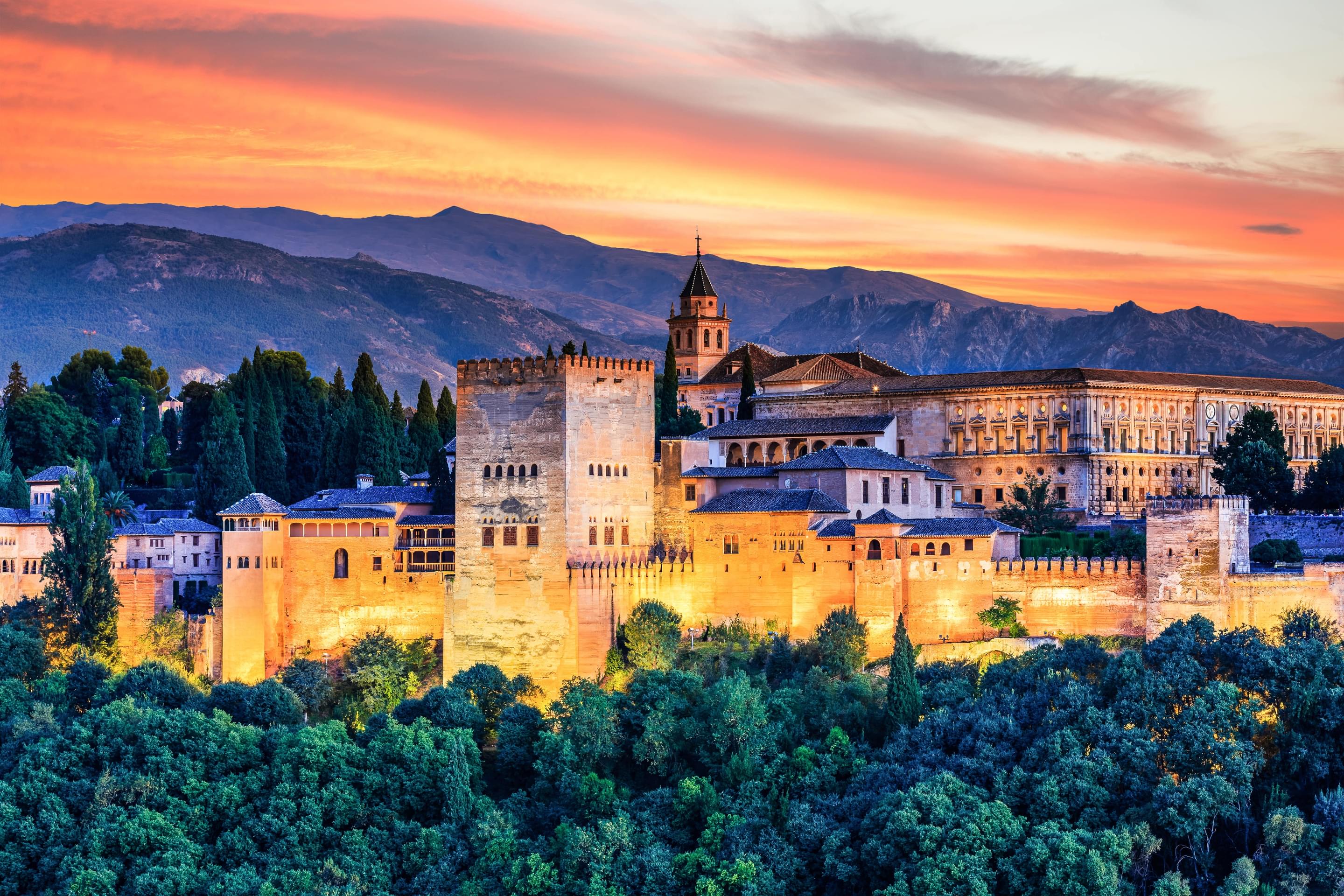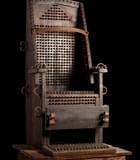Things to Do in Granada
Activities to Do in Granada
Granada is a popular tourist destination in Spain which is well known for its picturesque architecture and spectacular views. The city has a rich history dating back to the Moorish era, when it was an important cultural and political centre. Today, Granada is a thriving city with a vibrant cultural scene. There are many things to do in Granada, whether you're interested in exploring the city's rich history or enjoying its contemporary culture. It is known for its tapas, its flamenco music and dance, and of course the Alhambra – a fortress and palace complex built by the Moors in the 13th century.
Granada also has a number of museums and galleries that stay open late, so if you’re looking for something a little more cultural to do in the evening there are plenty of options available. And if you’re hoping to catch a glimpse of some of the city’s famous landmarks lit up at night, then a stroll around Granada’s streets is certainly worth doing. There is something for everyone in Granada, so be sure to add it to your list of activities to do in Granada
For those who are wondering what to do in Granada Spain at night, there are many things to do in Granada Spain to explore the nightlife. The city centre is particularly lively, with a number of bars and clubs to suit all tastes. If you’re looking for something a little more low-key, there are also plenty of bars and restaurants dotted around the city that offer a more relaxed atmosphere.
The Church of San Nicolas is one of the most important religious buildings in Granada and is one of the best examples of Gothic architecture in Spain. The exterior of the church is decorated with numerous sculptures and reliefs, and the interior contains beautiful altarpieces. The Church of San Nicolas is a must-see for anyone interested in Spanish art and architecture.
Known to be one of the most sought-after tourist destinations in Granada, Catedral de Granada offers an impressive design due to its simple facade, tinted glass windows and two enormous towers standing at a height of 81 metres. Catedral de Granada is considered the first-ever Renaissance church in Spain that features intricate architectural design, making it one of the most significant buildings in the city.
The earliest Arab bath in Spain was reopened in 1998, five centuries after it had been closed, as the Hammam Al-Ándalus Granada. The design of the architecture was influenced by Roman and Greek bathhouses. It had a set arrangement of rooms, including a room for undressing, a cold room, a warm room, and a hot room.
Famously known as Parque de las Ciencias, it is a science museum in Granada based on the outskirts of the city. Dating back to 1995, Parque de las Ciencias is the first-ever interactive museum in Andalusia. The museum is spread over more than 70,000m2, making it one of the biggest parks in the city, and is categorised in various zones for smooth exploration.
La Alcaicería was the central marketplace in the Moorish city of Granada. It was built in the 14th century and, at its peak, was one of the largest and most prosperous markets in all of Europe. In addition to its myriad of shops, La Alcaicería is also home to some of Granada's most iconic landmarks such as Plaza Nueva, the grandiose Cathedral of Granada, and the stunning Alhambra Palace.
Palacio de la Madraza was a madrasa founded in the mid-fourteenth century by the Nasrid monarch Yusuf I. It was dedicated to the study of languages, mathematics, and medicine. The building was later converted into the Town hall of Granada and is currently owned by the University of Granada. It does not retain its original character since it has been the subject of various interventions.
A monastery that formerly housed Carthusian monks in Cartuja is the Monasterio de Nuestra Señora de la Asunción ``La Cartuja". The town's famous baroque church serves as its main draw. Construction on the monastery began in 1516 under the direction of Córdoba architect Don Gonzalo Fernández, and monks occupied the site until 1835.
El Bañuelo is a historic museum in Granada that was originally an Arab Bath dating back to the 11th century. It is one of the oldest and best-preserved hammams of the city as an allusion to the Islam dominance in Spain. El Bañuelo is now a cultural heritage site and a popular tourist attraction that can be explored for free.
A well-liked city square in the center of Granada is called Plaza Isabel La Católica. It is located at the crossroads of Reyes Catolicos Street and Gran Via de Colón. To commemorate the signing of the Capitulation of Santa Fé, the square features a monument to Queen Isabel and Christopher Columbus.
Designed to resemble the palaces of the Spanish city of Granada at the time, Museo Casa de Los Tiros is a popular museum visited by tourists from all around the world. The guns that were previously stationed between its battlements gave rise to the building's nickname, "house of the shoots." It had a fortified, military look because it was a part of the Los Alfareros neighborhood's defense wall.
Patio de los Leones or the Court Of The Lions is a historical palace in Granada that is touted to be the architectural pinnacle of the Alhambra. Flaunting a traditional Moorish architecture, the palace features an iconic marble fountain in the centre. The fountain has 12 lions that channels the water coming out of the lions’ mouths thus signifying the hydraulic system.
Alcázar Genil is a Muslim-era Almohad palace that served as a recreational house for the Nasrid dynasty during the 13th century. It features a royal Moorish architecture with an ornate qubba, a fountain and a flower bed on the exterior and a beautifully decorated interior with sculptures and carvings. The palace is now an important cultural site that also houses the Francisco Ayala Foundation.
Biodomo Granada is a science museum located in Parque de las Ciencias science centre that aims at the conservation and research of the world’s biodiversity. It is an educational space that exhibits the relationship between human beings and environment and the mechanisms facilitating life. The park houses 250 different species of flora and fauna nurtured in replicas of their natural habitats.
Fundación Rodríguez-Acosta is a Carmen villa renowned for its extraordinary architecture and all-white interiors. In 1916, painter José María Rodríguez-Acosta constructed this traditional house as a studio. It has beautiful rooms filled with historic-artistic objects that give a glimpse of the painter's cosmopolitan and refined taste. There's also a work studio and beautiful gardens with columns, sculptures, and fountains.
More Granada Activities
Our Partners
Granada Things To Do FAQs
What are some of the best things to do in Granada?
Click Here to Book: Alhambra Tickets
Location - C. Real de la Alhambra, s/n, 18009 Granada, Spain
Location - P.º de los Mártires, s/n, 18009 Granada, Spain
5. Visit Generalife: One of the best things to do in Granada Spain is to visit Generalife, the beautifully landscaped gardens adjacent to the Alhambra. The gardens are a great place to relax and take in the views of the city and surrounding mountains. Generalife is also home to a number of interesting museums and monuments, making it a great place to learn about Granada's rich history, one of the best activities to do in Spain.
Location - 18009, Granada, Spain
Location - Plaza Mirador de San Nicolás, 2, 18010 Granada, Spain
Location - 26GV+VJ2, The Lime Grenada (the craft market is not in, The Lime, Grenada
Location - Av. de la Ciencia, s/n, 18006 Granada, Spain
Location - Casa-Museo Federico García Lorca, C. Virgen Blanca, s/n, 18004 Granada, Spain
Suggested Read: Top Things to See in Granada Spain
What are the romantic things to do in Granada?
Also Checkout: Granada Packages
What are the best things to do in Granada, Spain at night?
What is the best time to explore Granada?
How to reach Granada?
How many days do we need in Granada?
Is Granada Expensive for tourists?
Is it worth visiting Granada for a family trip?
So whether you want to explore the city's many museums and historic sites or just relax in one of the numerous parks and gardens, there are many things to do in Granada for a hassle-free family vacation.
What is there to do in Granada in 2 days?
Make sure to try some of the local Spanish cuisine, like tapas and paella. And no trip to Granada would be complete without taking a hike up to the Sierra Nevada mountains for some breathtaking views.
Also Checkout & Book: Granada Cathedral Tickets
Which are the best Spain attraction tickets that we can book from Thrillophilia?
Here is the list of best Spain attraction tickets that you can book from thrillophilia are:
- Alhambra & Generalife Tickets
- La Sagrada Familia Tickets
- Museo Cuevas del Sacromonte Tickets
- Barcelona Aquarium Tickets
- Siam Park Tickets
- Abadía del Sacromonte Tickets
- Museu Nacional D'art De Catalunya Tickets
- Plaza De Toros Seville Tickets
- Royal Alcazar Seville Tickets
- Setas De Sevilla Tickets
- Park Guell Barcelona Tickets
- Tickets to Royal Palace of Madrid
Newly Added Granada Experiences
Granada Things To Do Reviews


























.jpeg?w=1280&dpr=1)






















.jpg?w=340&dpr=2)
.jpg?w=140)










.jpeg?w=340&dpr=2)



























